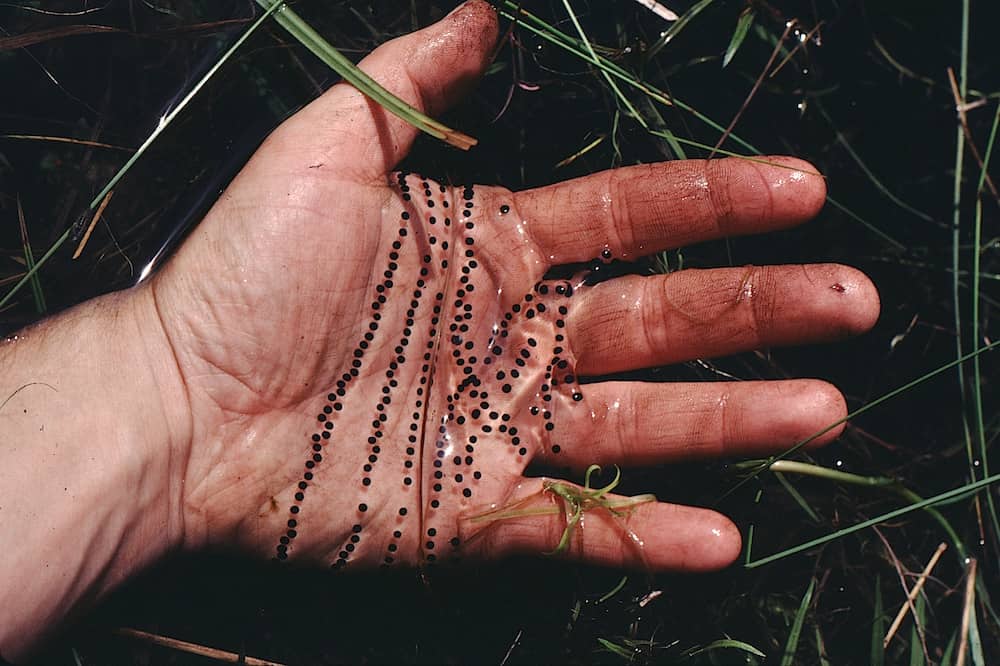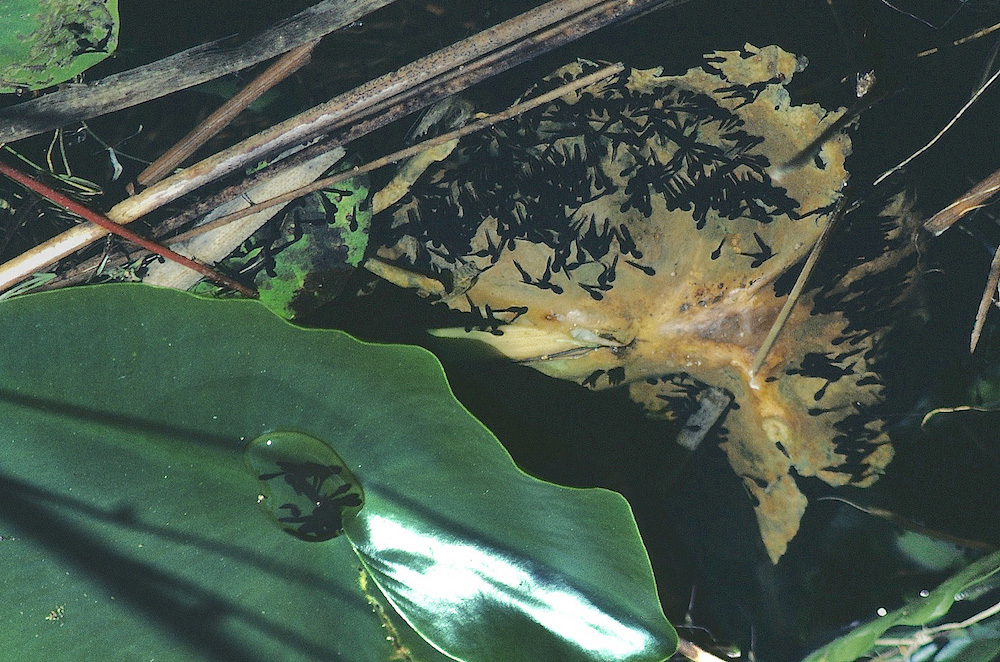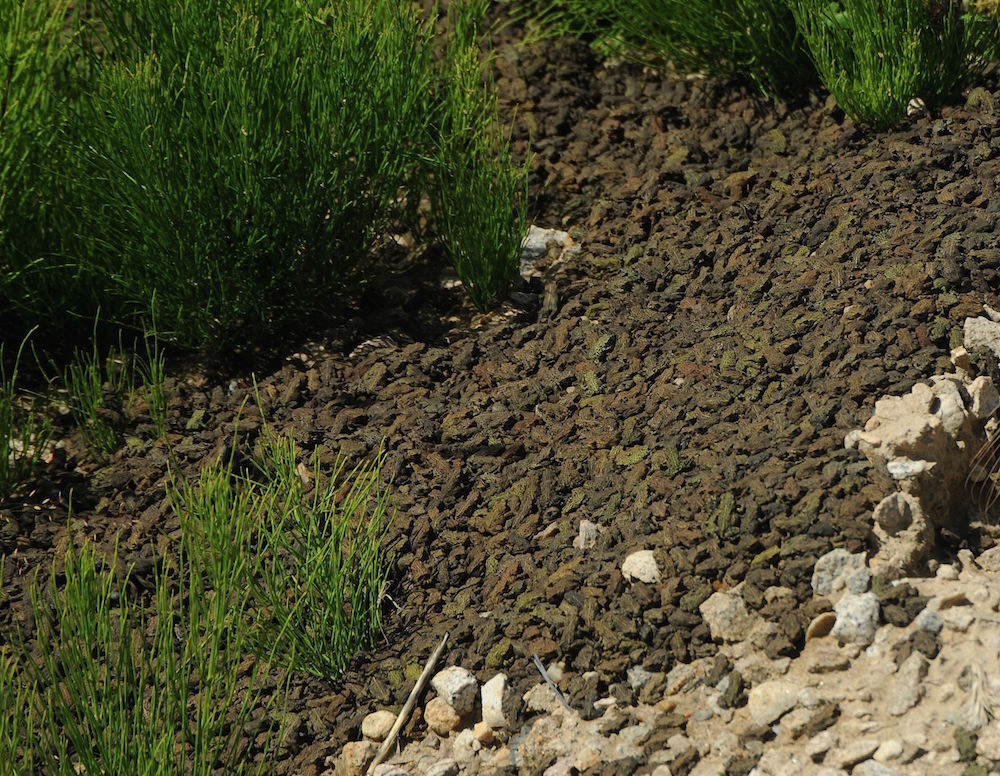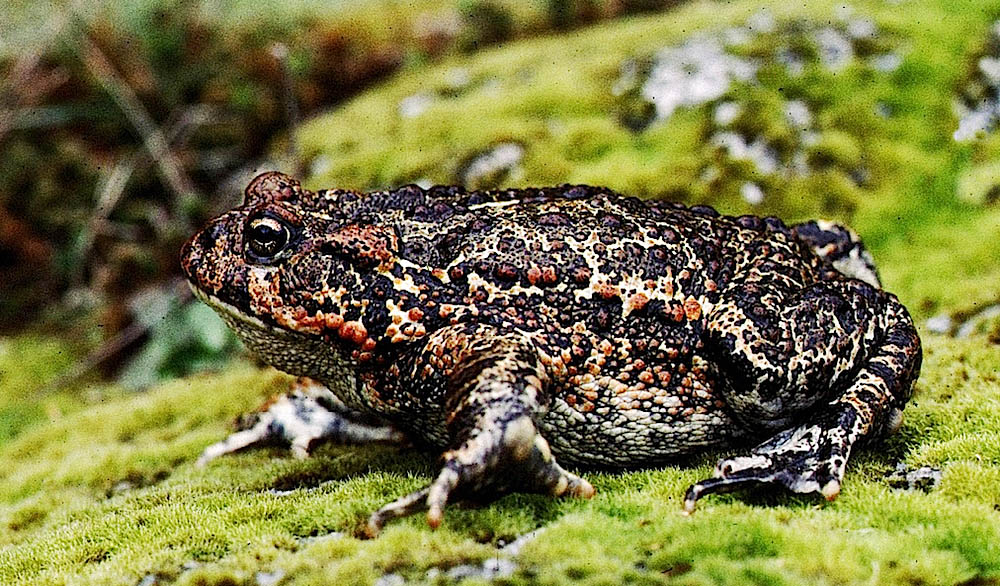
(All photographs are author’s, unless indicated otherwise.)
Once known as Bufo borealis, then corrected to Bufo boreas, now changed to Anaxyrus boreas, it’s still the same, one and only, (North) Western Toad to be encountered in our area (including Vancouver Island).
Kingdom: Animalia
Phylum: Chordata
Class: Amphibia
Order: Anura
Family: Bufonidae
Genus: Anaxyrus
Species: A. boreas
“To be encountered” – if at all – one has to add, for the numbers of this amphibian have been going down, to the point where it is most unlikely that you will ever meet one on Cortes Island. The Western Toad is yellow-listed in BC and considered a species of concern.
The last time one could have referred to Western Toads as common on Cortes Island was in the 1980s, when their quiet ululations could be heard from the vegetated edges of lakes and ponds
during mating season.

One of the more poignant experiences, sadly no longer easily available today, was having a male Toad mount the boot of an observing naturalist, and, with great determination and surprising strength, hang on in what is called amplexus. Out there, in the Darwinian world of strife and competition, where life’s only goal is reproduction, the imperative to mate can drive males blind with desire.
Soon, long gelatinous egg-strands could be found at the margins of various bodies of water throughout the island.

Later in the year, charcoal black tadpoles would populate shallow waters in conspicuous swarms, feeding on algae and bacterial scum on rotting vegetation.

Mortality is high at this vulnerable stage, when, among other predators, Dabbling Ducks take a huge toll on tadpole numbers, as well as on the successfully metamorphosed Toadlets, as they are leaving the water for dry land. Yet in some places thousands of miniature Toads have been observed, congregating in large migratory masses.
Not too long ago, the species seemed common enough in the Campbell River area of Vancouver Island to present a road hazard – or rather the road, i.e. the relatively new Inland Highway, presented a hazard to them, when, as tiny Toadlets, they crossed by the thousands (the papers said a million) from their wetland breeding grounds into the drier woods of their home habitat. (Courier Islander, August 31, 2007).
The author was privileged to see such an aggregation once on Haida Gwaii (sadly, no photos). Here and there in BC, the spectacular phenomenon of mass migration can still be observed:

The reasons for the dramatic decline of the Western Toad on Cortes Island are unclear. The decline seemed to happen simultaneously in locations like Gunflint Lake and the Anvil Lake area, as observed by the author. No sighting reports have come in from other places.
Though there is Oliver Kellhammer’s exceptional record of a single adult Toad in K’was Park, sometime around 2012. And, most recently, on October 14th, 2015, Jocelan Coty encountered a large toad on her driveway, near her home in the Squirrel Cove region.
Perhaps there is reason for hope.
The author would appreciate reports of Western Toad sightings (edgeswamp@gmail.com) – and every effort should be made to protect the wetland areas where they occur.



